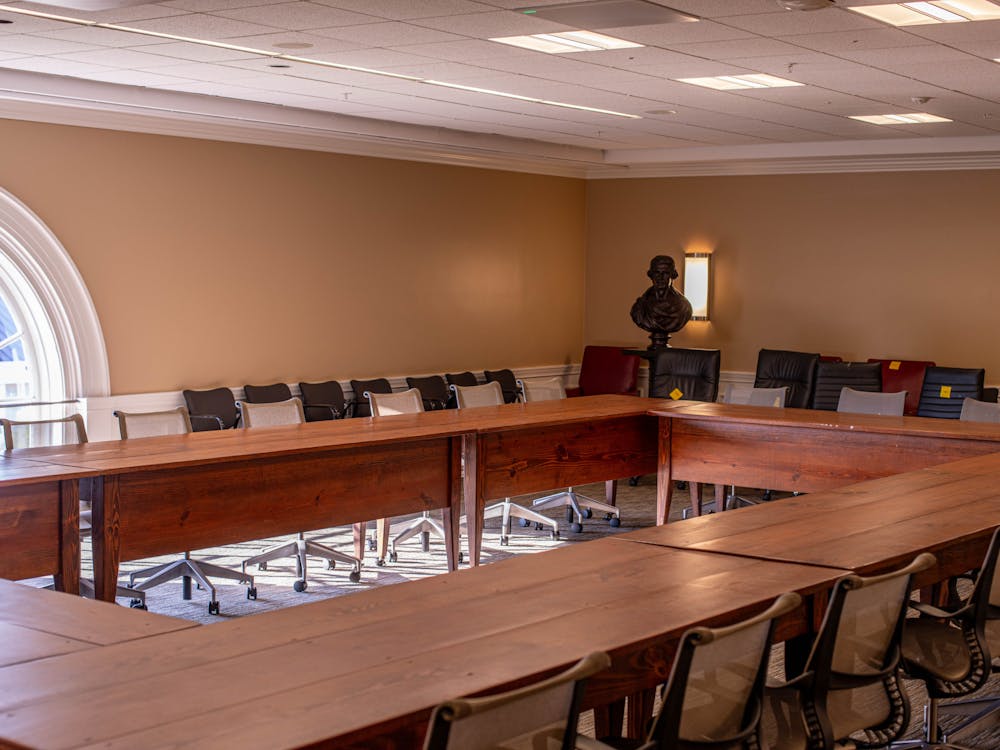In the midst of South Lawn Project construction and first-year student housing development, the University is poised to make significant changes to its use of space that could benefit both the University and Charlottesville communities during the next two decades, University Architect David Neuman said.
Using a new Grounds Plan unveiled in late November as a starting point, the University aims to develop a site that is both economically and environmentally sustainable, Neuman said, noting the Grounds Plan serves as a document guiding University construction efforts and architectural development.
Neuman, who has served as University architect for the past five years, explained that the current plans have been a work in progress for the past 30 years.
“The plan is not a traditional or conventional master plan,” Neuman said, noting that because of this, the plan will not be greatly affected by the commonwealth’s current budget crisis. “It is about how to manage our resources from a land-use perspective.”
Neuman also emphasized the plan’s flexibility by addressing the question, “If we are going to build a new structure, how do we go about the siting and fitting of that building in the context of the University so that it is sustainable?”
He explained that his office takes a broad perspective when addressing the construction of any new structure — even a bus stop.
“When we site a bus stop, we think of all the ramifications of the bus stop,” Neuman said, “not only convenience but also the economics of the bus stop.”
Along with the new Grounds Plan’s emphasis on building facilities that are multifunctional and can be used as classrooms, libraries or research labs, the University is also aiming to sustain Thomas Jefferson’s view of a more rural campus, Neuman said.
According to the new Grounds Plan, the University has created “a clear development boundary designed to emphasize the compact growth.”
In order to do this, Neuman said the University will need to modify slightly how and where it thinks about constructing new buildings.
“We’re going to build up a little bit instead of out, so we can keep the ground area open” and stay within the University’s existing boundaries, Neuman said.
One ongoing example of this is the construction of the new Alderman Road residence halls, he added.
“Although [they] will be taller, we will have more open area when we’re finished with the development than we do now,” Neuman said, “because we’ll have less building footprint, and the ones we put back will be one or two stories taller than the old ones.”
Slightly taller University buildings might also enhance the quality and character of the remaining open space.
“We’ll have more open space that will be part recreation area and part of it will be preserving the woods, so that character is there as well,” Neuman noted.
Another major feature included in the new Grounds Plan is a renewed emphasis on protecting the environment, such as the stream valley being created along with the South Lawn Project, Neuman explained.
Neuman said the point of recreating the stream valley in that area is “to return the natural topography of the site and therefore the more natural landscape of the site.” He also said the stream valley might create research opportunities and help with storm water management.
Charlottesville Mayor Dave Norris applauded the University’s careful planning and desire to create a more sustainable landscape.
“The extent to which the University is trying to build and grow in a more environmentally sustainable manner, which they’re trying to do in a number of ways, certainly benefits the Charlottesville community,” Norris said.
Norris also said he appreciates that the University’s new building approach seeks to reduce the consumption of natural resources. In the past, Norris said, the University has been a major consumer of resources.
“We can hopefully point to the University as an example in terms of what they’re trying to do with their Grounds Plan,” Norris said. “We can all be a little smarter in the way we develop and grow.”
Additionally, the University’s new building efforts might help address some of the economic woes currently facing the city.
“The other aspect of [the new Grounds Plan] that can’t be overlooked is the economic impact the University has,” Norris said. “By attracting more students, more economic activity, more building, more research, etc., these kinds of long-term strategic investments in the growth of the University really do benefit the city by buffering us from the economic trends we’re seeing nationwide and statewide.”
Overall, the plan allows the University to remain true to its natural roots and give back to the local economy.
“The plan guides us to end up with more green space than we have today while still having more people and built space,” Neuman said.






